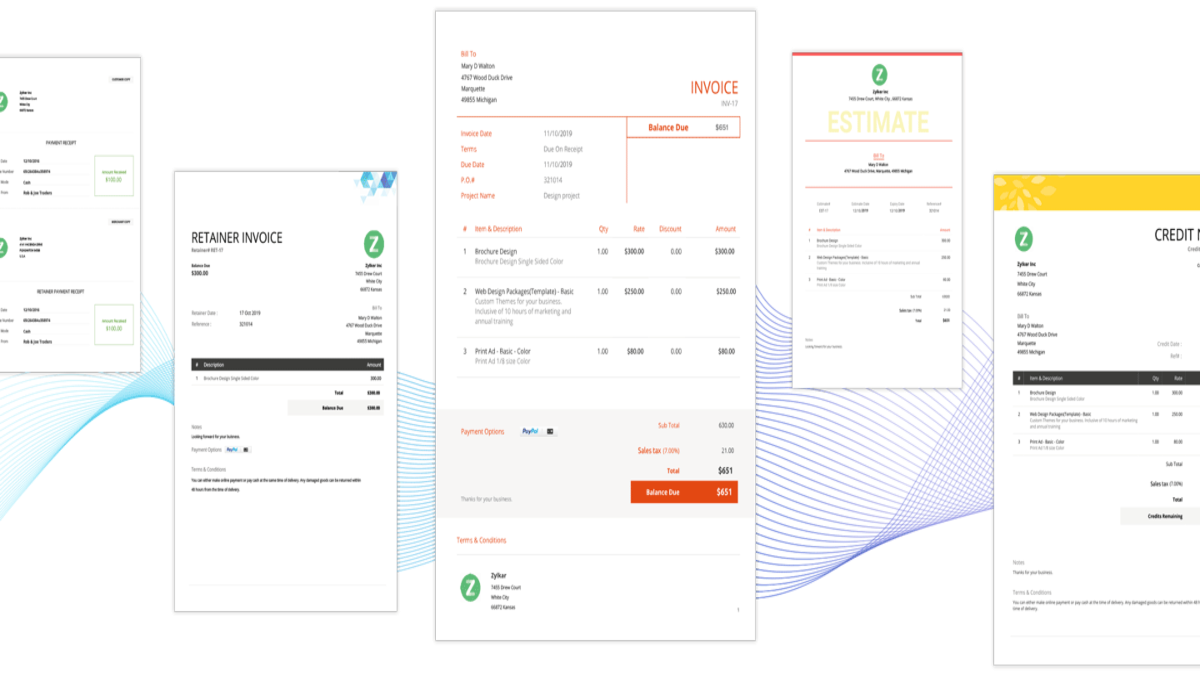Business
PortalOne Raised $15 Million From Founders Fund, Atari, and Kevin Lin’s Twitch

PortalOne Earlier this month, at the tvlunden TechCrunch, the founders of the port alone, a company that creates online games portalone 15m founders twitch kevin lin, raised 15 million dollars to launch their first game, called Twitch. The game will be available on a mobile device and will also have a web version. It will have a variety of different games, including a slingshot game that allows users to throw objects, shoot enemies, and hit other players. The company is also working on a game that allows players to play the role of an astronaut. It is hoped that the game will be released soon.
Portalone 15m Atari founders fund twitch
Founders Fund, Atari, and Kevin Lin’s Twitch have all invested in PortalOne. This company is aiming to deliver the best of both worlds, a gaming experience with live television content. The company has been in closed beta for a while, but it is expected to move out soon. PortalOne, which will soon be open to the public, has received a $15 million seed from Founders Fund. Other notable investors include Atari, Coatue Management, Rogue Capital Partners, TQ Ventures, and Signia Venture Partners.
The aforementioned $15 million seed will help fund the development of a game that promises to take gaming to the next level, by adding a live media component. The company also aims to build a social community around its game engine.
Portalone 15m Atari founders fund Kevin
During recent years, Portalone gaming devices have been declining in popularity. But a group of former Atari employees has decided to start a fund to support Portalone gaming devices. Their goal is to raise $1 million by the end of the year. They believe there is a demand for port-alone devices in the market. They have already raised over $100,000 and hope to raise more funds. They have already invested in companies such as Twitch and Atari. The former employees believe there is enough interest in the project to raise money.
Among the investors are Xen Lategan, the former executive advisor at several companies, and Mike Morhaime, the founder of Dreamhaven. Others include Talis Capital, TQ Ventures, and Signia Venture Partners. The company’s primary product encrypts data before it leaves a computer. It also offers the ability to block cookies and trackers. They are in closed beta right now, but they hope to enter the market soon.
Portalone has been gaining attention for its unique data protection methods. It has a browser extension that blocks cookies, trackers, and government surveillance. The company has been working with companies such as Twitch, which is a live-streaming video platform. They have also invested in eSports.
Portalone 15m Atari founders fund in
Having raised over $15 million, PortalOne, a hybrid gaming and TV show app, is getting ready to launch into the market. The startup company has secured investments from a number of top players in the gaming industry, including Atari, Twitch, and Coatue Management. It is also backed by investors such as Sunny Dhillon, the founder of Signia Venture Partners and the former CTO of Hulu, and Talis Dhillon, the founder of TQ Ventures.
PortalOne is also working with a number of gaming companies, including Riot Games, Blizzard, and Dreamhaven. The company’s main product is an online security tool that encrypts data before it leaves the computer, protecting it from hackers and government surveillance. The company also aims to create a social community around its game engine.
The company’s other investors include Atari, Founders Fund, Seedcamp, Rogue Capital Partners, and Coatue Management. It also has investment from Twitch, the popular live-streaming video platform. According to the company’s COO, eSports is the fastest-growing category in the gaming industry.
Portalone 15m Atari Kevin tvlundentechcrunch
Earlier this year, a group of former Atari employees launched a fund to support the development of the Port alone, a gaming device. They believe there is enough interest in the project to raise the required funding. Their goal is to raise $1 million by the end of the year.
The company is led by Atari founder Nolan Bushnell, who is also the CEO of Twitch, the live-streaming video platform. Twitch co-founder Kevin Lin is also part of the investment. Other investors include Atari, Talis Capital, SNO Ventures, and Seedcamp.
Atari hopes to capitalize on the portability of its Portalone gaming device, which is also able to stream to Twitch-enabled devices. Portability has always been a key factor in the gaming industry. The Portalone is compact and light, which helps make it easy to carry around. It also offers a browser extension that helps users block trackers and cookies. The product is also designed to encrypt data before it leaves a computer, protecting it from hackers and government surveillance.
PortalOne, the creator of what the company is calling ‘the world’s first hybrid games platform’, has secured $15 million in seed funding from some very heavy hitters in the worlds of tech, games, and media, including Twitch, Blizzard, Riot & Atari.
The company is bringing together the worlds of TV production and game development and tying it all together with tech. PortalOne has developed a blend of streaming video and interactive games, delivered to virtual reality headsets or mobile phones. Users can participate in live-streamed ‘game shows’, within which they can compete in interactive games.
After running a closed beta of its service for the last several months, the company is now preparing to launch in the US later this year, with the retro-inspired PortalOne Arcade, which will place the show’s guests inside ‘super-sized’ versions of classic arcade games – they’ve just signed an exclusive seven-year deal with Atari – as well as original new titles.
PortalOne is also planning to open its platform up to third-party creators, enabling other companies to publish their own hybrid games.
While the blend of live-streamed video and online gaming may not seem like a natural combination, some of the world’s biggest tech, media, and games investors are giving PortalOne their support.
The $15m seed funding round included: Founders Fund (Peter Thiel), TQ Ventures (Scooter Braun, Schuster Tanger, and Andrew Marks), and Signia Venture Partners whose LPs include Warner Bros., Disney, and Tencent.
The round also saw participation from a number of high-profile angel investors, including Kevin Lin (co-founder of Twitch), Mike Morhaime (co-founder of Blizzard and Dreamhaven), Amy Morhaime (co-founder of Dreamhaven), Marc Merrill (co-founder of Riot Games), Xen Lategan (former CTO and executive advisor at various companies such as Hulu), and Eugene Wei (former Head of Video at Oculus and Head of Product at Hulu). PortalOne’s strategic partners Atari and ARRI also invested.
PortalOne was co-founded in Norway, by brothers Stig Olav Kasin and Bård Anders Kasin. Bård previously worked as a Technical Director at Warner Bros. where he worked on revolutionary movie productions like the Matrix Trilogy. He also previously co-founded The Future Group, which provides mixed reality solutions for media production. Stig Olav previously worked as an award-winning developer and executive producer of interactive entertainment and mobile games. His background as a television executive includes leading roles for shows like The Voice and Who Wants to be a Millionaire.
Bård Anders Kasin, CEO and Co-founder of PortalOne, said: “We are incredibly fortunate to have been joined by a number of true icons and visionaries who immediately grasped the unique potential of PortalOne. To get such strong backing from so many industry innovators at such an early stage of this journey is something you can only dream of. All of our investors bring tremendous value to the table and we are grateful for all of their support.”
Scooter Braun, Co-founder of TQ Ventures, said: “As PortalOne continues to grow, it is seamlessly integrating the gaming and entertainment worlds to create a single interactive experience and endless opportunities for content creation. Creators and performers alike want new and innovative ways to bring their craft to life, and PortalOne is meeting that demand in a way that no other business has done. I’m excited to work with the entire team to realize their trailblazing vision. I have never seen anything like this before.”
Kirill Tasilov, Principal at Talis Capital, said: “Massive opportunities continue to emerge in the interactive entertainment space as distribution and business models evolve. PortalOne is redefining mobile by unlocking new hybrid experiences at the intersection of games and video, and we are thrilled to be a part of their journey.”
Kevin Lin, Co-founder of Twitch, said: “The next big social platform will likely be a convergence of media with gaming at its core – a truly new immersive interactive experience – and PortalOne is a major contender for becoming such a platform.”
Tag: Portalone 15m Founders Twitch Kevin Lin
Sunny Dhillon, Partner at Signia Venture Partners, said: “When we see virtual concerts inside of TikTok, Roblox, and Fortnite, it’s great but PortalOne offers an evolution of interactive metaverse entertainment – true real-time, one-to-many interaction between gamers around the world, all in a mobile-native hybrid game format. We’re thrilled to partner with Bård Anders and Stig Olav on this journey.”
Delian Asparouhov, Principal at Founders Fund, said: “We back companies that we believe have strong potential to become global category leaders. PortalOne creates a new category and simultaneously the platform that is clearly set to dominate that new category. The market is ripe, the opportunity is clear, and the potential is unlimited. PortalOne is poised to create a before and after in the industry.”
Business
Mueller Settlement Amazon: Navigating the Legal Landscape

Learn more about the intricacies of the Mueller Settlement Amazon, the consequences for Amazon legally and how it affected the company’s image. Discover the background, the thoughts of experts, and the steps Amazon took to win back customer confidence. Learn all about this retail giant’s struggles, triumphs, and plans for the future.
Introduction
Much attention has been focused on the Mueller settlement with Amazon in the intricate e-commerce industry. This article examines the origins, legal ramifications, and influence on Amazon’s reputation of this deal, among other complexities.
Understanding Mueller Investigation
What is Mueller Settlement Amazon?
A number of Amazon’s business activities were the subject of the inquiry that led to the Mueller settlement. To fully realise the implications of the settlement, it is vital to understand where this inquiry came from.
Significance of the Settlement
Understanding the settlement’s utmost significance in the business realm requires delving into the conclusions of the Mueller investigation and Amazon’s participation.
Legal Implications
Mueller Report Overview
A synopsis of the Mueller report explains the complex legal landscape that Amazon faced. To grasp the seriousness of the settlement, it is necessary to unravel the main conclusions and what they mean.
Amazon’s Legal Responses
In responding to the claims made in the Mueller report, Amazon’s legal staff was helpful. In this part, we will take a look at the methods Amazon used to protect its interests.
Settlement Details
Terms and Conditions
To further understand what Amazon was required to do, it is helpful to review the settlement agreement’s terms and conditions. Understanding the breadth of the settlement requires uncovering the financial ramifications for Amazon.
Impact on Amazon’s Reputation
Public Perception
Public opinion may have just as much of an effect as a court of law. It is instructive to compare popular opinion of Amazon before, during, and after the settlement.
Media Coverage
The media’s coverage of the Mueller settlement was essential in establishing its narrative. The impact on Amazon’s reputation as a result of the media attention is examined in this section.
Amazon’s Response Strategy
Communication Tactics
It takes finesse to communicate at a settlement. To make sense of what happened next, you had to know how Amazon strategically conveyed its position.
Changes Post Settlement
After the payment, Amazon made certain adjustments to fix its reputation. Taking a look at these adjustments shows how seriously the organisation takes the idea of learning from the mistake.
Lessons Learned
Corporate Responsibility
Many people started talking about corporate accountability after the Mueller deal. In this part, we’ll look at what other companies, including Amazon, have learnt.
Future Implications for Companies
Companies may learn a lot about how to deal with future problems like this by looking at the bigger picture of how the settlement affected their actions.
Expert Opinions
Legal Experts’ Take
Views on the Mueller settlement were expressed by legal professionals. Gaining insight into their viewpoints enriches the examination.
Business Analysts’ Perspectives
Analysts from the business world provide light on the potential financial consequences. Gaining insight into their viewpoints allows for a more complete picture to be painted.
Mueller Settlement Amazon: A Timeline
Key Events
To make sense of what’s happening, it’s helpful to go over the major points of the Mueller deal in chronological order.
Milestones in the Settlement
Readers may easily follow the events that had place by locating key points in the settlement chronology.
Consumer Trust Regained
Measures Taken by Amazon
Amazon did some things to win back the confidence of its customers. By breaking down these steps, we can see how seriously the business takes its consumers’ needs.
Customer Feedback
It is critical to pay close attention to what customers have to say. To gauge the success of Amazon’s campaigns, it is helpful to examine consumer comments made after the settlement.
Positive Outcomes
Changes in Corporate Practices
As a result of the Mueller settlement, Amazon revised and updated certain of its business policies. Looking at these developments highlights the benefits of the settlement.
Industry-wide Impact
Beyond Amazon, the settlement’s effects were felt. The effects of the settlement on the industry as a whole are discussed in this section.
Challenges Faced
Internal Struggles
Both during and after the settlement, Amazon encountered difficulties internally. The larger story gains depth from an appreciation of these challenges.
External Backlash
Amazon faced criticism from other sources. Managing a company’s reputation after a settlement is complicated, but it becomes clearer when you look at the external issues.
Success Stories Post Settlement
Amazon’s Growth
The fact that Amazon has continued to grow since the settlement shows how resilient the corporation is. A positive outlook might be gained by delving into this growth tale.
Positive Repercussions
One way to look at the bright side of things is to consider the good things that have come out of the settlement.
The Future of Amazon
Sustainability Efforts
After the settlement, Amazon made sustainability an even bigger priority. By delving into these initiatives, we can better understand the firm’s dedication to ethical business practices.
Ongoing Commitment
The commitment of Amazon to learning from the settlement and making wise adjustments will determine its future.
Conclusion
Last but not least, the path to a Mueller deal with Amazon has been one of profound change. To better overcome obstacles, organisations would do well to understand the legal, reputational, and operational ramifications.
FAQs
Is the Mueller settlement a setback for Amazon’s growth?
Amazon overcame obstacles presented by the settlement and continued to develop as a result.
How did the public react to the settlement?
Both proponents and detractors of the idea voiced differing views in response to the public outcry.
Were there long-term consequences for Amazon?
Improvements in corporate responsibility and shifts in business practices were among the long-term effects.
Business
10 Top Photo Tiles, Wall Art, and Canvas Prints Companies

Introduction
In today’s digital age, we capture countless moments with our cameras and smartphones, but often these memories remain trapped in the digital realm. Fortunately, there are companies that specialize in turning your cherished photos into stunning pieces of art that you can proudly display in your home. From photo tiles to canvas prints, these companies offer a wide range of options to transform your memories into beautiful decor. In this article, we’ll explore the top 10 companies that excel in this field, with special mention to Wallpics, a standout choice.
-
Shutterfly
Shutterfly has long been a household name in the world of personalized photo products. They offer an array of options, including canvas prints, framed prints, and acrylic prints, allowing you to transform your photos into elegant wall art. Shutterfly’s user-friendly website and customization tools make it easy to create personalized pieces that suit your style.
-
CanvasPop
CanvasPop is known for its high-quality canvas prints. They use premium materials and advanced printing techniques to ensure your photos are reproduced with vivid colors and sharp details. CanvasPop offers a range of customization options, allowing you to choose the perfect size and frame to match your decor.
-
Mixtiles
Mixtiles specializes in photo tiles, making it easy to create a unique wall display. Their peel-and-stick tiles are not only convenient to install but also offer a modern and sleek look. You can rearrange them easily, ensuring your wall art is always fresh and appealing.
-
Printique
Formerly known as AdoramaPix, Printique is a trusted name in the world of photography. They offer a variety of printing options, including canvas prints and metal prints, all of which are known for their exceptional quality. With Printique, you can be confident that your photos will be turned into beautiful works of art.
-
Easy Canvas Prints
As the name suggests, Easy Canvas Prints makes the process of creating canvas prints a breeze. Their user-friendly website guides you through the customization process, allowing you to choose from various sizes, frames, and even image enhancements. The result is stunning canvas art that’s delivered to your doorstep.
-
CanvasDiscount
CanvasDiscount is known for its affordable canvas prints without compromising on quality. They frequently run promotions and offer competitive pricing, making it a budget-friendly option for transforming your photos into canvas art. Despite the lower prices, the quality of their prints remains impressive.
-
Nations Photo Lab
Nations Photo Lab is a professional-grade photo printing service that offers a wide range of products, including canvas prints and metal prints. They are known for their attention to detail and color accuracy, ensuring your photos are faithfully reproduced. Nations Photo Lab is a popular choice among photographers and art enthusiasts.
-
Great Big Canvas
Great Big Canvas specializes in large-format art prints that can make a bold statement in your home. Their collection includes a wide range of styles, from contemporary to classic, ensuring there’s something for everyone. Whether you want to showcase your own photos or explore their vast library of artwork, Great Big Canvas has you covered.
-
Fracture
Fracture takes a unique approach to photo printing by directly printing your images on glass. The result is a sleek and modern look that enhances the vibrancy of your photos. Their minimalist design and easy-to-hang system make it simple to transform your photos into eye-catching wall art.
-
Wallpics
Last but not least, Wallpics deserves a special mention on this list. Wallpics offers a distinctive and creative way to display your photos as wall art. They specialize in photo tiles that can be easily arranged and rearranged on your wall. With Wallpics, you have the flexibility to create your own unique photo collages and arrangements, adding a personal touch to your decor.
Conclusion
Turning your favorite photos into beautiful wall art has never been easier, thanks to the top-notch companies mentioned in this article. From canvas prints to photo tiles, these companies offer a variety of options to suit your style and budget. Whether you’re looking for professional-grade quality or a budget-friendly solution, you can trust these companies to transform your cherished memories into stunning pieces of art. And with Wallpics’ creative approach to photo tiles, you have the freedom to design your own unique wall display that tells your story in a truly personalized way. So, don’t let your precious memories stay hidden on your devices; turn them into beautiful art pieces that you can enjoy every day.
Business
Top 8 Invoice Generator Software for Freelancers, Small Businesses, and Professional Contractors

Introduction:
In today’s rapidly evolving business world, the demand for efficient tools to manage financial transactions and streamline operations has never been greater. Freelancers, small businesses, and professional contractors all require effective invoice generator software to create professional invoices and ensure timely payments. In this article, we present a new list of the top 8 invoice generator software solutions, with a focus on Zintego, an innovative invoicing tool that can revolutionize your billing process.
-
QuickBooks Online:
QuickBooks Online by Intuit is a highly popular cloud-based accounting software suitable for freelancers and small businesses. It offers a robust invoicing module with customizable templates, expense tracking, and online payment capabilities. QuickBooks Online also integrates seamlessly with various third-party applications.
-
Xero:
Xero is another cloud-based accounting software that excels in invoicing. It provides customizable invoices, expense management, and multi-currency support. Xero’s intuitive interface and automation features make it an excellent choice for small businesses and professional contractors.
-
FreshBooks:
FreshBooks is a user-friendly invoicing and accounting software tailored for freelancers and small businesses. It offers automatic payment reminders, expense tracking, and client management. FreshBooks also provides a time tracking feature and supports multiple payment gateways.
-
Zoho Invoice:
Zoho Invoice, part of the Zoho suite of business software, offers comprehensive invoicing features. Users can access customizable templates, time tracking, expense management, and online payment processing. Zoho Invoice integrates seamlessly with other Zoho applications, providing a holistic business management solution.
-
Wave:
Wave is a free invoicing and accounting software ideal for freelancers and small businesses on a tight budget. Despite its cost-free nature, Wave offers essential features such as invoice customization, expense tracking, and secure payment processing. Additional paid add-ons are available for advanced functionality.
-
Hiveage:
Hiveage is an all-in-one invoicing and billing solution designed for freelancers, small businesses, and professional contractors. It offers customizable invoicing templates, expense tracking, and time billing. Hiveage also includes robust reporting features to help users gain insights into their financial performance.
-
Invoice2go:
Invoice2go is a straightforward invoicing software that caters to the needs of small businesses and professional contractors. It provides customizable invoice templates, expense tracking, and online payment acceptance. Invoice2go also offers a mobile app for on-the-go invoicing.
-
Zintego – A Game-Changing Invoice Generator:
Among the top invoicing software options, Zintego deserves special attention. Zintego has rapidly gained recognition for its innovative approach to invoicing. Here are some standout features that make Zintego a valuable addition to this list:
- Smart Automation: Zintego leverages smart automation to simplify the invoicing process. It can automatically generate recurring invoices, saving time and ensuring consistent billing for retainer clients or subscription-based services.
- Customizable Templates: Zintego provides a range of customizable invoice templates, enabling users to create invoices that match their brand identity. You can easily add your logo, adjust colors, and customize the layout to your liking.
- Expense Tracking: The software includes expense tracking features, allowing users to monitor business expenditures effortlessly. Expenses can be categorized, receipts attached, and detailed expense reports generated for better financial management.
- Multi-Currency Support: Zintego understands the needs of international businesses and offers multi-currency support, making it easy to invoice clients in their preferred currency.
- Payment Integration: Zintego integrates seamlessly with popular payment gateways, facilitating online payments and reducing payment delays.
- Client Management: Zintego assists in managing client information, providing quick access to contact details, transaction history, and outstanding balances. This feature is invaluable for maintaining strong client relationships.
- Mobile Accessibility: With the Zintego mobile app, users can create and send invoices from anywhere, ensuring flexibility and efficiency in their invoicing process.
- Data Security: Zintego prioritizes data security by employing encryption and secure protocols to protect financial information, ensuring the utmost confidentiality for users and their clients.
Conclusion:
Invoicing plays a pivotal role in the success of freelancers, small businesses, and professional contractors. The right invoice generator software can simplify invoicing, enhance professionalism, and boost cash flow. While established solutions like QuickBooks Online, Xero, and FreshBooks offer robust features, Zintego’s innovative approach and user-friendly interface make it a compelling choice.
As businesses continue to evolve, having a reliable invoicing tool like Zintego can make a significant difference in managing finances efficiently and nurturing client relationships. Explore these options to find the software that best fits your invoicing needs and helps your business thrive in today’s competitive landscape.
-

 Social Media10 months ago
Social Media10 months agoWho is Rouba Saadeh?
-

 Apps10 months ago
Apps10 months agoWhy is Everyone Talking About Hindi Keyboards?
-

 Social Media10 months ago
Social Media10 months agoMati Marroni Instagram Wiki (Model’s Age, Net Worth, Body Measurements, Marriage)
-

 Entertainment10 months ago
Entertainment10 months ago12 Online Streaming Sites that Serve as Best Alternatives to CouchTuner
-

 Apps10 months ago
Apps10 months agoThings you need to know about Marathi keyboard today
-

 Apps10 months ago
Apps10 months agoStuck with Your default Bangla keyboard? Isn’t it time for a change?
-

 Entertainment10 months ago
Entertainment10 months agoMovierulz Website: Movierulzz 2021 Latest Movies on Movierulz.com
-

 Social Media10 months ago
Social Media10 months agoBrooke Daniells: Everything About Catherine Bell’s Partner












